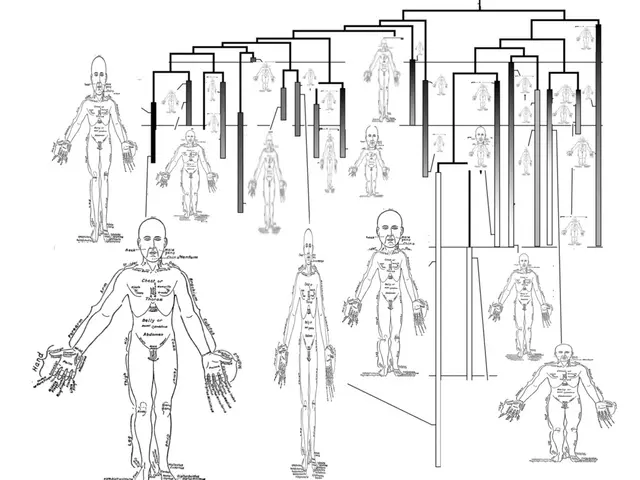Expanded Collaboration in Military Health Services Yields Challenges in Quantifying Results
The Defense Department and the Veterans Affairs (VA) have been working to streamline their health care services through a series of shared agreements, aiming to reduce administrative hurdles and optimize federal resources. However, despite progress in clearing the backlog of unpaid claims from 2018 to 2024, challenges persist in areas such as data sharing, cost efficiency, clinical outcomes, and governance.
One of the main challenges has been the incomplete electronic health record (EHR) sharing between VA and DoD systems, despite both moving to a common Oracle Cerner-based platform (MHS GENESIS). Assessing the integration, sharing, and updating of patient information is crucial, as seamless data exchange can reduce redundant tests and improve treatment coordination.
Cost efficiency and the avoidance of duplication are also key areas of focus. Studies suggest that veterans often use both VA and non-VA systems, leading to potentially duplicated inpatient care and inefficiencies. Evaluating areas of overlapping system use can uncover cost-saving opportunities by coordinating care better across systems and avoiding unnecessary services.
Measuring patient health outcomes, especially in complex areas like mental health, where integrated approaches yield better results, provides insight into the effectiveness of shared care. Given recent endorsements for a shared virtual health strategy by both DoD and VA, measuring the implementation and impact of virtual care on service accessibility, cost, and quality is another important factor.
Successful sharing requires clear governance and alignment of priorities between VA and DoD to implement joint strategies effectively. A successful evaluation framework should look across technical (EHR interoperability), operational (care management and virtual health services), and financial (cost and efficiency metrics) dimensions to identify gaps and opportunities that benefit both veterans and the federal government.
In practice, evaluations can use a combination of quantitative data analysis to track costs, utilization, and clinical outcomes, alongside qualitative feedback from veterans, providers, and administrators involved in the shared care. Such evaluations should also consider ongoing improvements in health IT systems to facilitate integration and operational collaboration.
The Defense Department has limited the use of non-reimbursable agreements following concerns in 2020. When the VA refers a veteran to a Defense Department medical facility, it reimburses DoD at a 20% discounted rate compared to the community Medicare rate, indicating potential cost savings. The agreements allow the two agencies to share facilities, medical staff, administrative personnel, and provide non-medical services like training or laundry services.
As of April 2025, there are 185 active health care sharing agreements between the VA and the Defense Department, a 14% increase from 162 agreements in 2022. However, the Government Accountability Office (GAO) found that the VA and DoD fail to assess the effectiveness of these agreements and identify opportunities for new or expanded sharing agreements. Identifying new opportunities for sharing remains a challenge, with most new agreements initiated at the local level.
Accessing military bases remains a challenge for veterans in implementing these shared agreements. The GAO identified main barriers to implementing these shared agreements in 2012, and many of them persist over a decade later. Alyssa Hundrup, the Government Accountability Office's health care director, stated that there are opportunities for cost savings with these agreements, but the agencies do not track them effectively. The DoD agreed with the recommendation to finalize guidance on when and how to pursue non-reimbursable agreements but did not provide a timeline for issuing new procedures.
In conclusion, while health care sharing agreements between the VA and DoD offer opportunities for increased access to health care and cost savings, there are still challenges that need to be addressed. Improvements in data sharing, cost efficiency, clinical outcomes, and governance are necessary to fully realise the potential benefits of these agreements for veterans and the federal government.
- The federal workforce, specifically within the Defense Department and the Veterans Affairs, is seeking to reimagine health care services through shared agreements, focusing on areas such as science, medical-conditions, and health-and-wellness, by working to improve data sharing, cost efficiency, clinical outcomes, and governance.
- The reimagined workforce of both the Defense Department and the federal workforce in the Veterans Affairs should prioritize the evaluation of patient health outcomes, especially in complex areas like mental health, to assess the effectiveness of shared care, virtual health strategies, and to identify gaps and opportunities for cost savings and improved treatment coordination.




